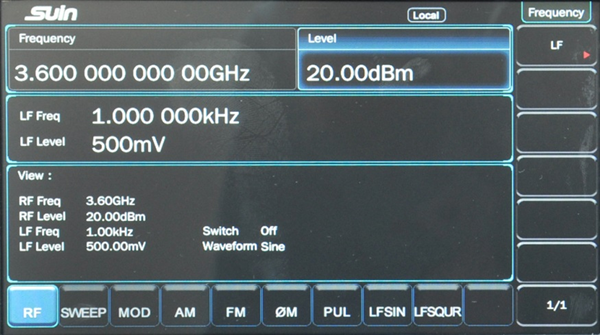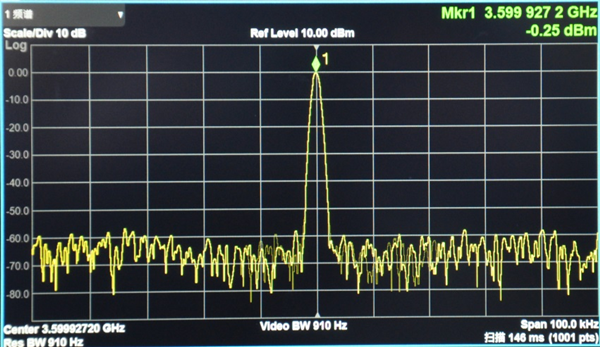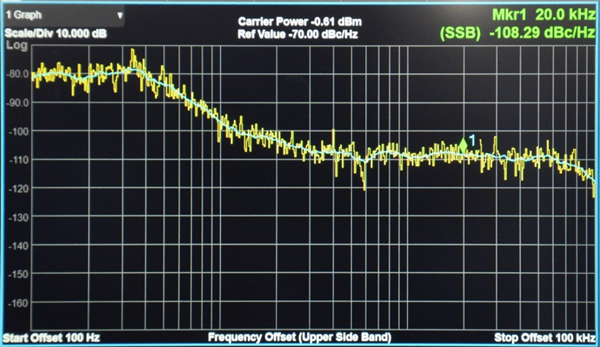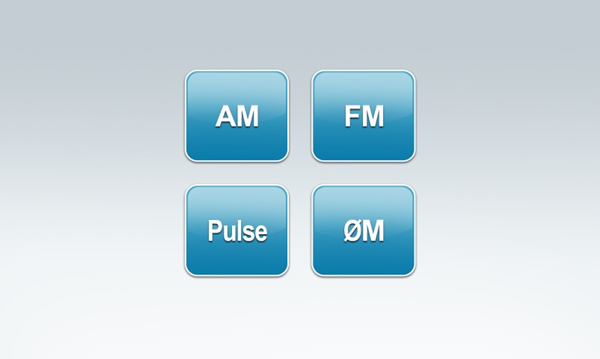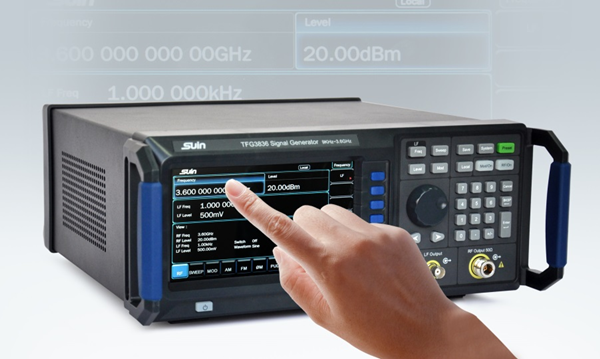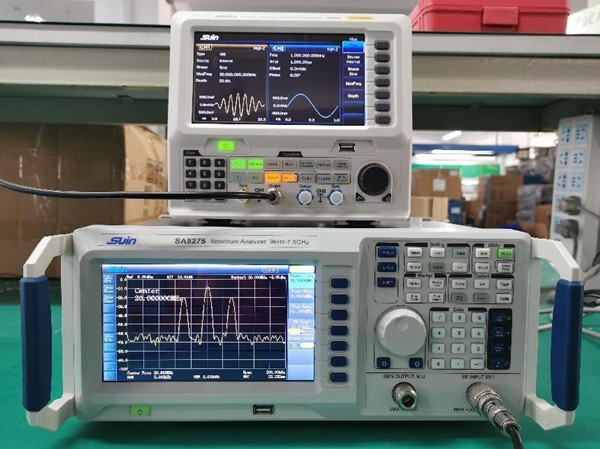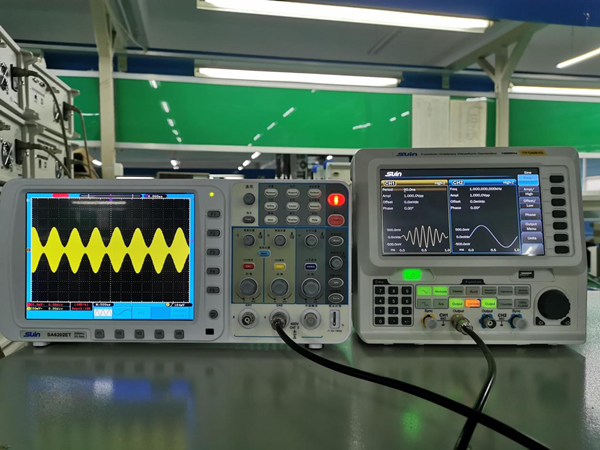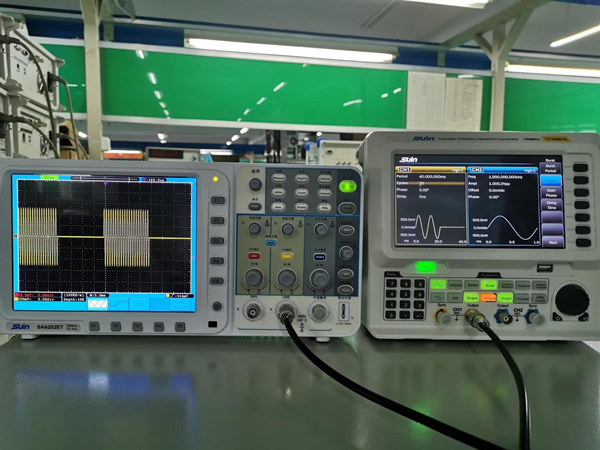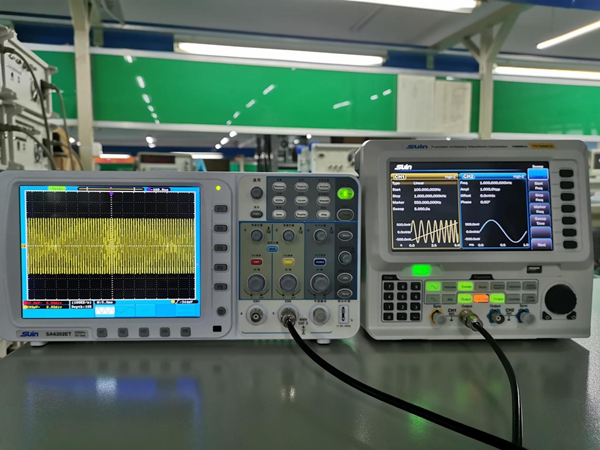In electronic testing, we always need to test the resistance characteristic and transmission characteristics of the electric circuit. Transmission characteristic includes gain and attenuation, amplitude-frequency characteristic, phase-frequency characteristic, etc. The instrument to test these characteristics is called a frequency characteristic analyzer, simply named frequency sweeper. It is really a good helper for adjusting, calibrating, and troubleshooting the electric circuit not only in education but also in research and development.
Now we’ll take SA1140C Frequency Characteristic Analyzer as an example to demonstrate how to test the frequency response of an RC circuit.
Before testing, SA1140C should be calibrated firstly by pressing [CAL] key, then set as follows:
• Output gain -30dB
• Start 5kHz
• Stop 100kHz
• Impedance 500k
And then connect the RC circuit as below picture shown:
• C=15 nF
• L=4.7mH
• f=20.200kHz
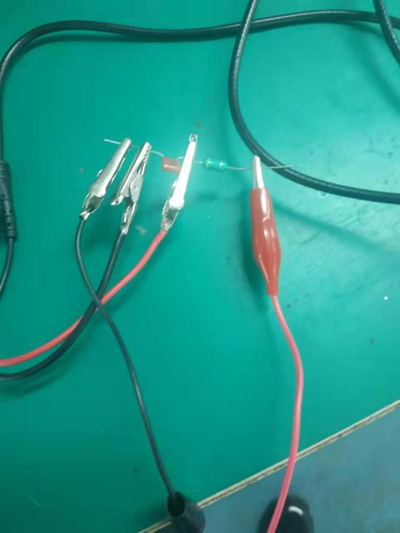
The measuring result will be displayed in SA1140C as below picture:
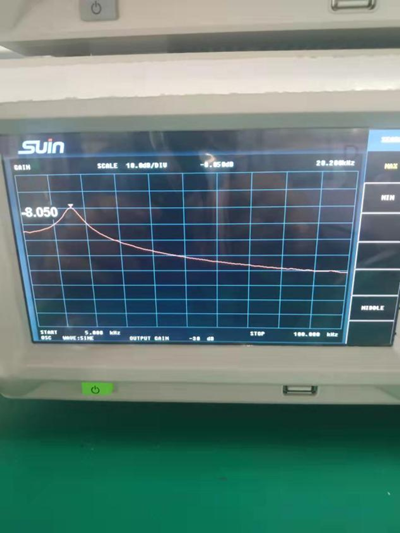
You can also measure the frequency response of the LC resonance circuit or low pass filter according to the above set and operation.
If you want to know more about the SA1140C Frequency Characteristic Analyzer, please check its specification on Suin website or contact us directly.
